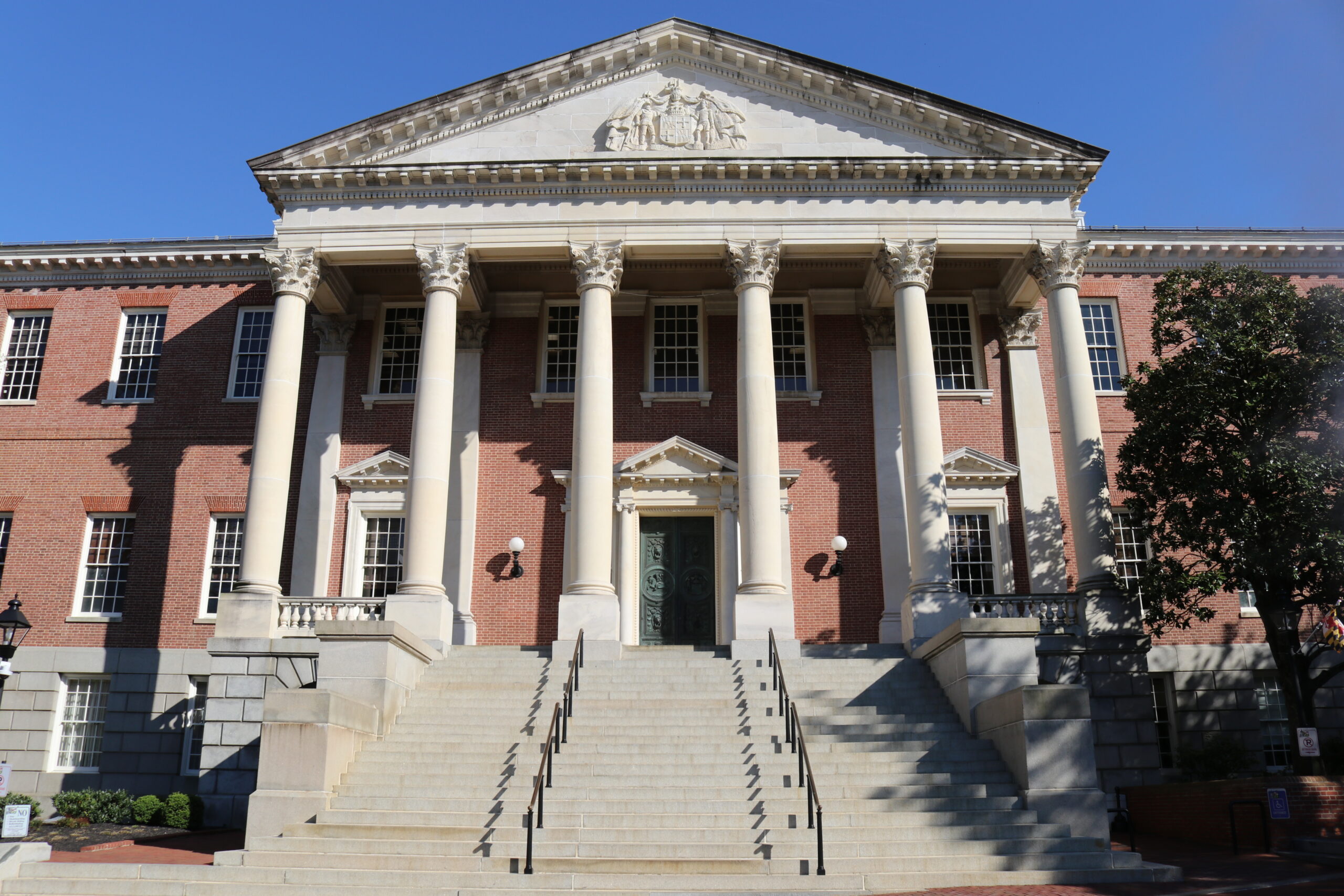Fiscal Analysts Recommend Attacking Structural Deficit

Fiscal analysts encouraged the General Assembly’s budget committees on Monday to do more this year to address the state’s structural deficit ― particularly before education reform or an economic downturn could widen the shortfall.
Republican Gov. Lawrence J. Hogan Jr.’s $47.9 billion proposed budget includes changes to state spending and revenue to close a cash shortfall, but Department of Legislative Services analysts say the proposal leaves a structural deficit of about $37 million.
The House Appropriations and Senate Budget & Taxation committees received their first in-depth briefing of the 2020 legislative session by fiscal analysts on Monday afternoon.
David C. Romans, fiscal and policy coordinator for the Department of Legislative Service’s Office of Policy Analysis, said Hogan’s proposed budget is “fairly sparse” in terms of new initiatives, but does include some cuts that the General Assembly’s Democratic majority will find controversial.
However, Romans said a marquee issue for Democrats this session ― implementing the Kirwan Commission’s funding recommendations for a 10-year, multibillion-dollar education reform plan ― will have no impact on the structural deficit for the 2021 and 2022 fiscal years.
“In the near term, you can pretty comfortably make this happen, but as we get further out, it’s going to become more challenging to fund,” Romans said.
By 2023, a modest deficit of $52 million forms as the result of increased Kirwan Commission spending, based on current spending and revenue projections. By 2025, using the same figures, the Kirwan reforms would add $573 million in additional spending that would drive up the structural deficit to more than $1.6 billion.
The outlook sours further if analysts factor in a potential economic slowdown, which is predicted by both Maryland’s Board of Revenue Estimates and Moody’s Analytics in 2021.
Assuming that a slowdown would add 50,000 people to the state’s Medicaid rolls and affect other state spending patterns, the Department of Legislative Services estimated that the structural deficit could increase to more than $2.2 billion in 2025.
“At some point, we are going to see a slowdown in the economy and if we’re running a really high structural gap before you hit a slowdown, it becomes a true crisis to try to balance the budget,” Romans said.
He suggested that both the executive and legislative branches should work over the next year or two to substantially shrink the gap.
Overall, Hogan’s proposed budget for fiscal year 2021 limits general fund growth to about 1 percent, while all funds grow by about 1.6 percent, reflecting “relatively modest budget growth compared to some past years,” Romans said.
The governor’s budget is balanced by a Budget Reconciliation and Financing Act, which rolls back some spending mandated by lawmakers in previous years.
That includes slowing the growth of community college funding but cutting in half a formula-driven 15 percent increase for 2021 and slowing the formula’s growth in future years as well. By fiscal 2025, the changes to the formula would divert about $100 million in funding from the state’s community college programs. The act also proposes freezing the funding formula for nonpublic colleges in 2021 and slows future growth of that formula as well.
A third provision of the act would also slow proposed rate increases for developmental disability and behavioral health providers. Lawmakers proposed a 4 percent rate increase for 2021, which the Hogan budget would cut back to 2 percent.
Because those cuts are in the Budget Reconciliation and Financing Act, lawmakers can restore the funding, but would need to identify other revenues or savings to balance the budget.
Other areas of Hogan’s budget likely to get attention from lawmakers, including compensation for state workers. The state’s largest employee union, AFSCME, was excluded by the Hogan administration from a 1 percent cost of living increase on Jan. 1, and a 2 percent increase that lawmakers attempted to earmark for the union’s members in 2021 is not included in the governor’s proposed budget.
Lawmakers will also decided how to address Hogan’s proposed allocation of $58 million for Kirwan Commission initiatives next year. While a funding workgroup that finished meeting in the fall recommended initial spending on college and career readiness programs, the governor proposed spending the $58 million first on pre-kindergarten and expansion of grants to schools with high concentrations of children living in poverty.
Budget committee members also signaled that they want information about proposed funding for the Howard Street freight rail tunnel in Baltimore.
Hogan called the state’s initial funding for the $466 million project a major priority for his budget this year. Through 2024, the state will contribute $202.5 million to the project, which would modify the tunnel and 22 other bridge structures between Baltimore and Philadelphia to accommodate double-stacked shipping containers, increasing the Port of Baltimore’s capacity.
The federal government is expected to contribute about $128 million to the project and the Pennsylvania Department of Transportation will contribute $22.5 million. CSX, which owns the rail property, will contribute $113 million.
Sen. Cory V. McCray (D-Baltimore City) pointed out that CSX is only contributing about a quarter of the total cost, while the rest is subsidized by government spending. Del. Carol Krimm (D-Frederick) asked that any future analyses about the project include the potential economic benefits to the company. Lawmakers have also expressed concern that $20 million of the state funding will be drawn from the state roads budget for the city of Baltimore.
The briefing was the first of several budget-makers will receive during the course of the legislative session, and some details are still being worked out.
Romans said analysts don’t yet know the impact of Hogan’s recently proposed Retirement Tax Reduction Act on future budgets.
In other perennial issues, lawmakers will decide whether to go along with Hogan’s proposal to increase BOOST scholarships to private schools from $3.4 million currently to more than $10 million in 2021, and how to include legislative bond initiatives in the state’s capital budget, where Hogan set no funding aside for the annual spending.
Sen. James C. Rosapepe (D-Prince George’s), vice chair of the Senate budget panel, said while there are budgetary issues that need to be resolved this session, it’s just the nature of the work and the checks and balances of government. “I don’t see anyone’s hair on fire,” he said.




 Creative Commons Attribution
Creative Commons Attribution